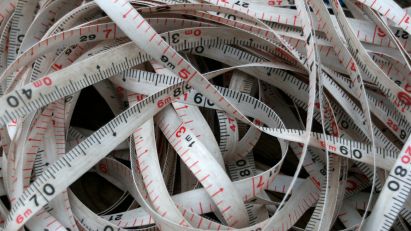
Blog post -
Measuring Digital PR – Part 1: Why Measure?
By Adam Cranfield, Digital Marcoms at Mynewsdesk.
Why measure?
Why do we measure communications performance? To justify our work to our boss? To justify our work to the client? To win awards? To win future work?
Well, perhaps it’s a bit of all of those – but, in the end, the best reason to measure the impact of PR and communications is to answer one question: What should we do differently next time?
Measurement, research and insight help us to decide how our resources should be used next time around, how our key messages can be improved, and which audiences are most responsive to our tactics. Ultimately we don’t measure to "prove success". We measure to get the evidence that can guide future decisions around messaging, execution, channels and targeting.
Measure what matters
Since measurement is all about evidence and informing decisions, the question of what to measure becomes all about which types of measurement will give us the best, most conclusive and most insightful evidence. This, of course, varies depending on the nature of your business and the strategies you are considering.
“Queen of Measurement” Katie Paine, summarises this way of thinking as “Measure what matters”. Paine says:
“Only a handful of businesses – those that prosper, grow, and continuously improve – measure what matters. Most organisations, when asked what really matters to their business, would probably say, 'my customers' or 'my employees'. And they’d be partially correct. But it’s not the number of customers and employees that matter, it’s the relationships that your organisation has with them that matter.”
Paine argues that: “What really matters is your relationships and the aggregated outcome of those relationships: your reputation.” And she warns: “If you’re not measuring the health of your relationships, you won’t be in business for very long.”
Thinking like Katie Paine quickly shows the measurement challenge ahead. How do you measure the relationships between your brand, organisation or product and your audiences or customers? Relationships are complex, human, and cannot easily be expressed as a number.
A good start might be measures like awareness, loyalty, net promoter score, customer satisfaction or likelihood to consider/purchase. And concrete actions – widgets sold, money raised, or new sign-ups – are arguably the ultimate performance indicators.
Attribution – the hard one
Of course the big issue with both measures of attitude and measures of action is that it is often hard to attribute movement in these measures to a specific campaign, activity or piece of coverage.
If a charity sees a large increase in donations following front page coverage in a national, but at the same time they are running an advertising campaign, how do we assign the credit? Our research methodology must be advanced enough to separate out different causes. And the more concurrent marcoms activities a brand has running, the harder the analysis becomes.
Trend spotting
Social media consultant Olivier Blanchard argues that plotting data and looking for patterns and correlations will reveal what digital PR/social media activity is moving the needle and what isn’t.
In his sharp and witty presentation, Blanchard urges those running digital activity to plot the metrics that really matter, like sales figures, against various ‘non-financial impacts’ (which could be retweets, positive brand mentions, blog posts, etc) and look for the correlations that indicate the activity is delivering tangible outcomes. His presentation is well worth checking out: http://www.slideshare.net/thebrandbuilder/olivier-blanchard-basics-of-social-media-roi.
Seeing the light
The vast array of measures in the world of digital marcoms underlies a pretty heated debate around the value of digital metrics. From Facebook likes, to retweets, to online traffic, to Klout scores, there are experts who will urge you to measure more and more, while others protest that such measures are pure vanity and have very little value to serious business people.
Thinking in terms of evidence, again, should help us to see through the controversy and confusion. If a measure provides a reliable clue to what you should do differently (or the same) next time, then that measure has value to your business or your client.
I have worked for a major UK brand that defined a target for an annual PR campaign in terms of "number of pieces of coverage". As measures go, this is certainly one of the crudest. 35 pieces of coverage last year, 40 this year – what does that tell us about what we should do next year? Very little, other than to invest in some smarter tools and techniques.
Thankfully at Mynewsdesk we take a rather more sophisticated approach to online measurement.
How do you approach measurement? We'd love to hear your thoughts below.
In Part 2 of this blog series we will look in more depth at what to measure and the thorny question of ROI.

